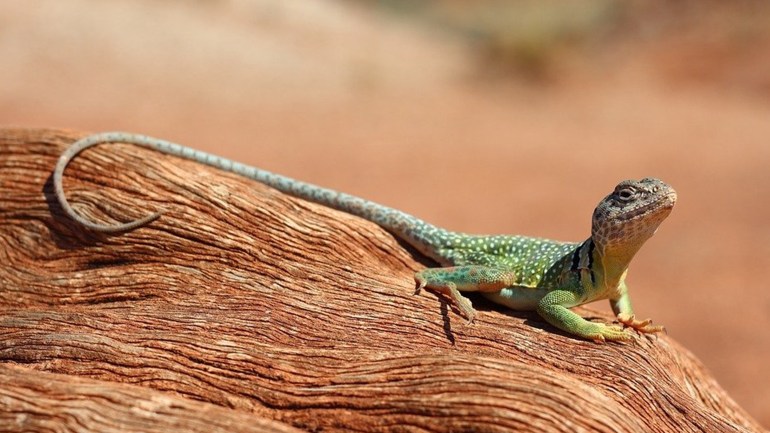Chameleons are characterized by their ingenious ability to change their color in response to the surrounding environment and the light falling on them, but scientists have recently discovered a type of chameleon that may not need to change its color to hide, because it is inherently hidden due to its small size.
In a recent study published in the journal Scientific Reports on January 28, scientists discovered this type of very small chameleon - which they called "Brookesia nana" - in an area of the existing rainforest. In northern Madagascar.
During their study, the researchers found a male and female of these nanoscale chameleons, which are about the size of a sunflower seed, and can stand their full length at the tip of your finger.
The length of the male was 13.5 millimeters, extending from the nose to the collector, where the excretory and reproductive site was located, while the length of the female was 19.2 millimeters.
Thus, the male is the smallest reptile on earth after it received this title from the dwarf Caribbean leper known scientifically as "Sphaerodactylus ariasae", which has a length of 16 mm.
Chameleons can change color depending on the environment they are in (Pixabay)
Finding such small reptiles raises critical questions related to the lower limits of what organs might be like within a vertebrate's body.
It also sheds light on the exciting biodiversity present on the island of Madagascar, which is severely endangered by human encroachment on nature there.
Scientists believe that chameleon will soon be listed as an endangered species.
Due to the increase in poverty and the increase in population in this region, there is a continuous increase in the clearance of rain forests to make room for agricultural and livestock activities.
This, of course, will affect the amazing biodiversity present on the island of Madagascar, threatening the survival of these chameleons.
Therefore, the area in which this chameleon was recently discovered has been included as a new nature reserve in Madagascar.
Mixed members and repeating pattern
"The general anatomical shape of reptiles is somewhat similar to that of mammals and humans. However, the dwindling of these reptiles' members is surprising," says reptile scientist Frank Gallow, who led the study in the State Group, according to the report reported by Live Science. Bavaria Zoology (Bavarian State Collection of Zoology) in Munich, Germany.
Because these organisms are so small, it was difficult to determine whether or not they were adults.
When the scientists examined her genitals using a CT scan, they noticed the presence of eggs in the female's ovaries.
However, it was difficult to determine the age of a male chameleon, which required careful examination of the reproductive organs.
Male lizards and snakes are known to have a pair of tubular genitalia that remain upside down inside the body until it is time to mate.
Also, immature male chameleons have smooth genitals.
Which the team did not find when they examined the male chameleon, which means that it is an adult male.
A chameleon’s tiny size raises questions about the lower limits of its internal organs (Pixabay)
By measuring the male's genitals, the scientists noted that their length reaches 2.5 millimeters, which is approximately 18.5% of the total body length.
However, this feature is one of the usual things in chameleons.
The length of the genitals in 52 species of chameleon ranges between 6.3% and 32.9% of the total body length, or an average of 13.1% of the body length.
However, this repeated pattern in chameleons is "interesting, as the smallest species often have relatively larger reproductive organs," says Mark Schers, co-author of the study from the University of Potsdam in Germany, as he posted on his blog.
Shears believes that the males of these creatures have preserved their reproductive organs as well, in order to match their height with the length of the female.
Because scientists have only found two members of the "Prokecia nana" chameleon, it is difficult to generalize this conclusion to all chameleons of the same family.
There may be other individuals of the same type, taller or shorter than them.
However, the discrepancy between the height of the female and the male is constant, which is known as "sexual dimorphism".

